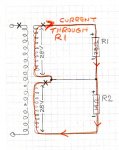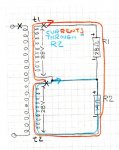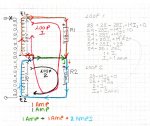SG-1
Senior Member
- Location
- Ware Shoals, South Carolina
:lol::lol::lol: I guess you're right. But to repeat, being a parallel circuit does not explain why the voltage from black to white and red to white are the same, because they're not.
I fear I'll have to take back my posts above, but it will just confuse people instead of helping.
Do we agree that black to white & red to white are the same magnitude ?
Do we agree that they differ only in that when black to white is at its positive peak, red to white is at its negative peak ?






